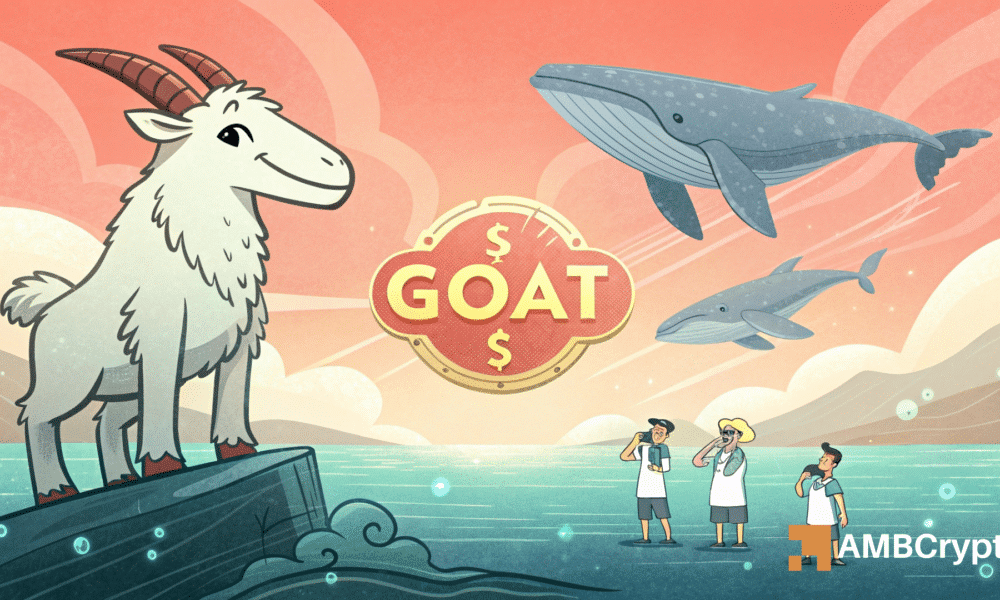As of the time of this composition, the price of Goatseus Maximus (GOAT) was observed to be moving in a descending trend channel. This was clearly demonstrated by its peak of over $1.30, indicating the possibility of a notable breakout under specific conditions.
Currently, the altcoin is being traded around $0.278, with a critical support level standing at $0.23. It is imperative for this support to be upheld in order to sustain the bullish scenario, stressing the significance of staying above this point to maintain upward momentum on the charts.
The descending trend channel denotes a downward pressure trend, yet recent activities suggest a potential for momentum that could breach the $0.80 mark. A successful break above this upper channel barrier and resistance level may trigger a bullish rally ranging between 100% to 200%.
On the contrary, a failure to remain above $0.23 could lead to further drops, testing the lower support levels at $0.228 – a critical juncture that could potentially witness increased selling pressure.
The key factor for this forecast lies in the ability to uphold price movements above the aforementioned resistance and support levels. This would confirm the shift in trend from bearish to bullish.
Significant Whale Activity Impacting GOAT and Liquidity Changes
The recent decrease in GOAT’s price prompted substantial whale activity, as evidenced by a transaction where 902,374 Fartcoin, valued at $1.2 million, were swapped for 3.07 million GOAT. This swap signifies a notable preference for GOAT over Fartcoin among major holders.
Continued accumulation of GOAT by whales and the divestment of Fartcoin could signal optimistic prospects for GOAT. The strategic moves made by these large holders might pave the way for GOAT to break out from its current descending trend channel.
If this trend of whale activity persists and capital continues to flow into GOAT, there is potential for a surge in its value. There is a chance that the altcoin could experience a substantial rally of 100% to 200% above its upper resistance level.
These activities have the ability to influence market dynamics and investor confidence, bolstering the rally further. The actions of whales typically precede major price shifts, making their behaviors crucial indicators of upcoming market trends.
Additionally, the overall liquidity delta in the order book for GOAT displayed a narrowing pattern in the pressures of buying and selling. This was particularly notable as GOAT’s price fluctuated around the $0.30 range.
Noteworthy was the alignment of strong buying interest with price spikes, signaling bullish momentum. Conversely, sell-offs were correlated with price declines. The liquidity dynamics hint at a potential breakout if buying pressure perseveres beyond key resistance levels.
Nonetheless, an increase in selling pressure could lead to further downturns, testing lower support levels. This interaction of supply and demand underscores the delicate balance that influences GOAT’s price trajectory.

